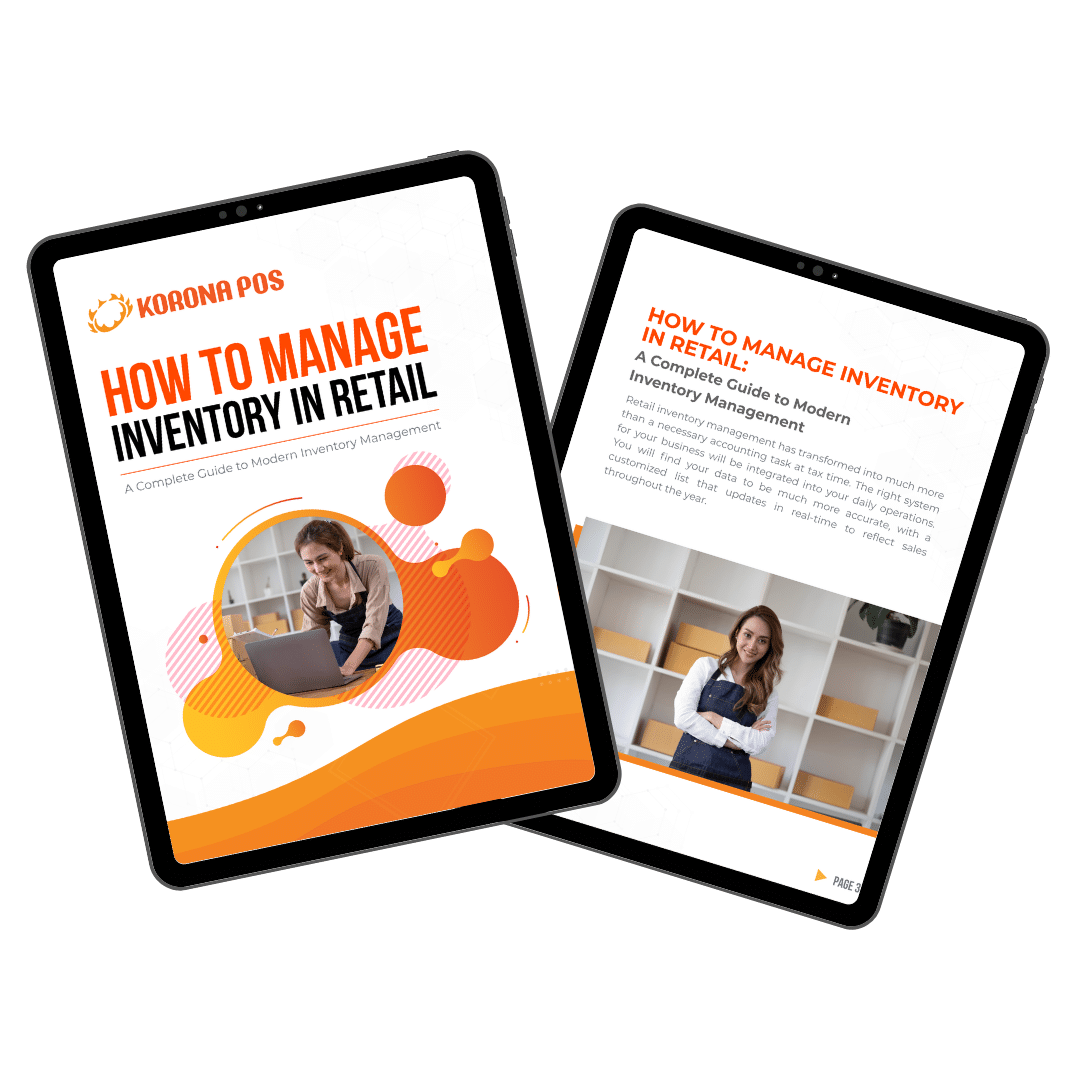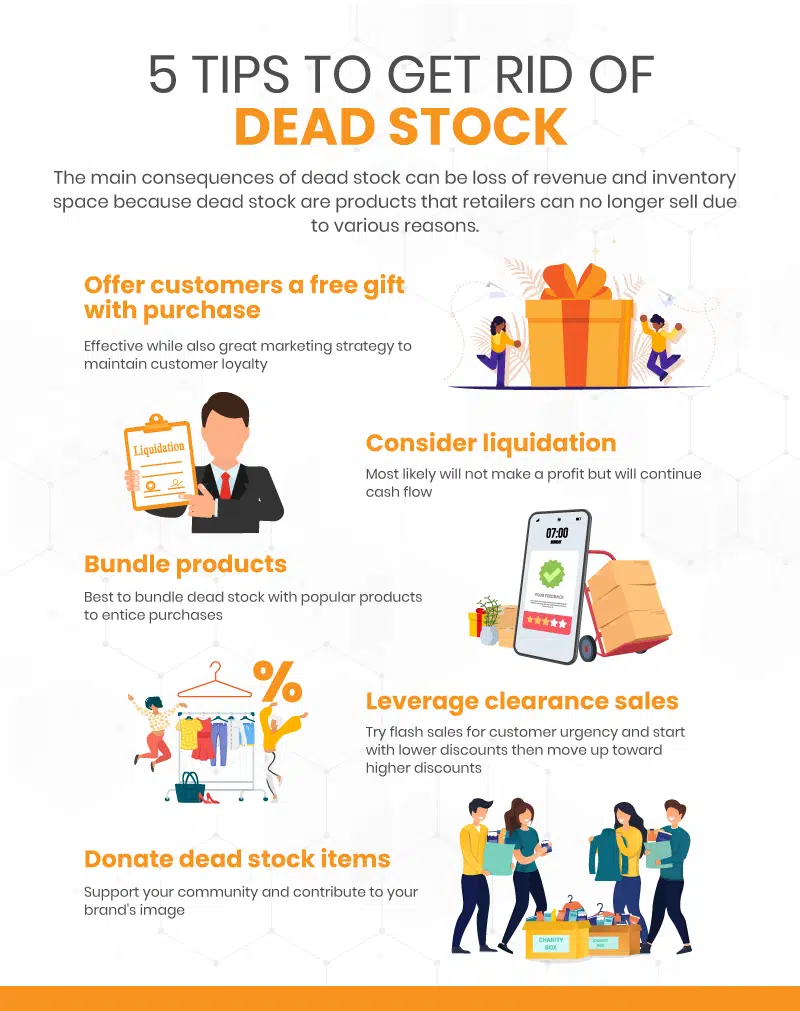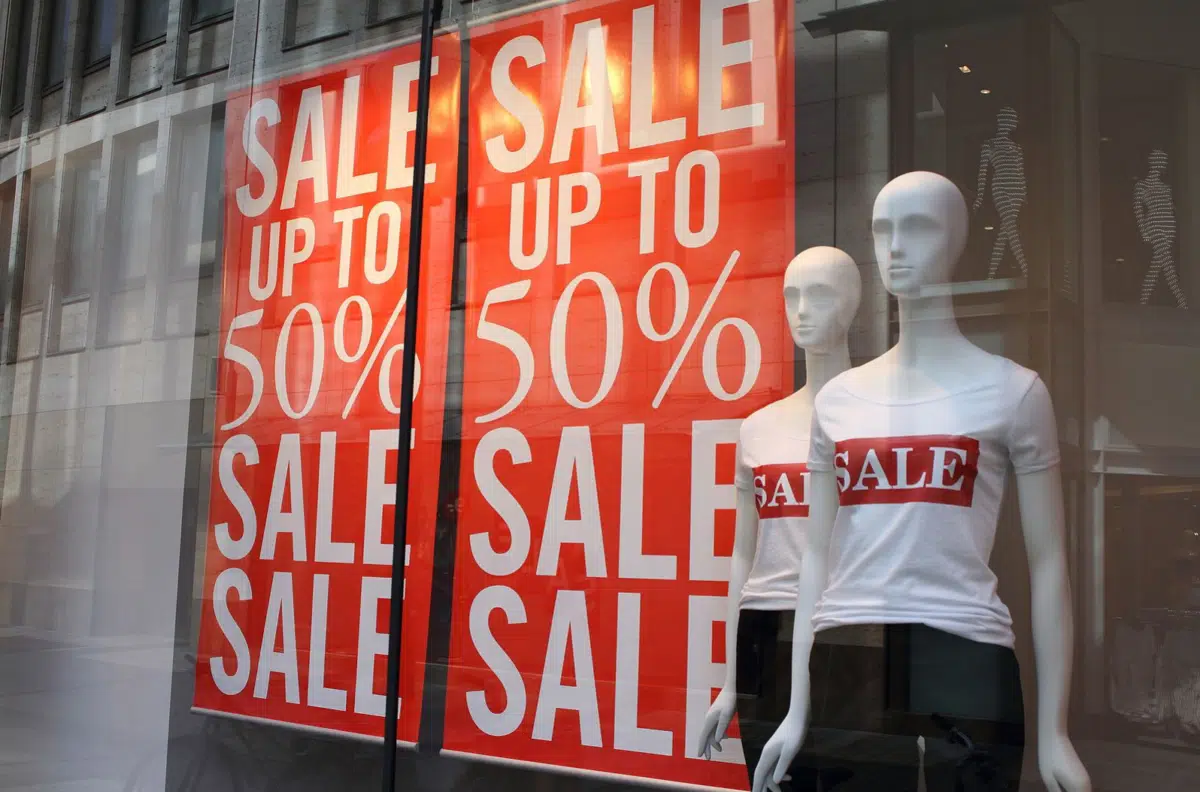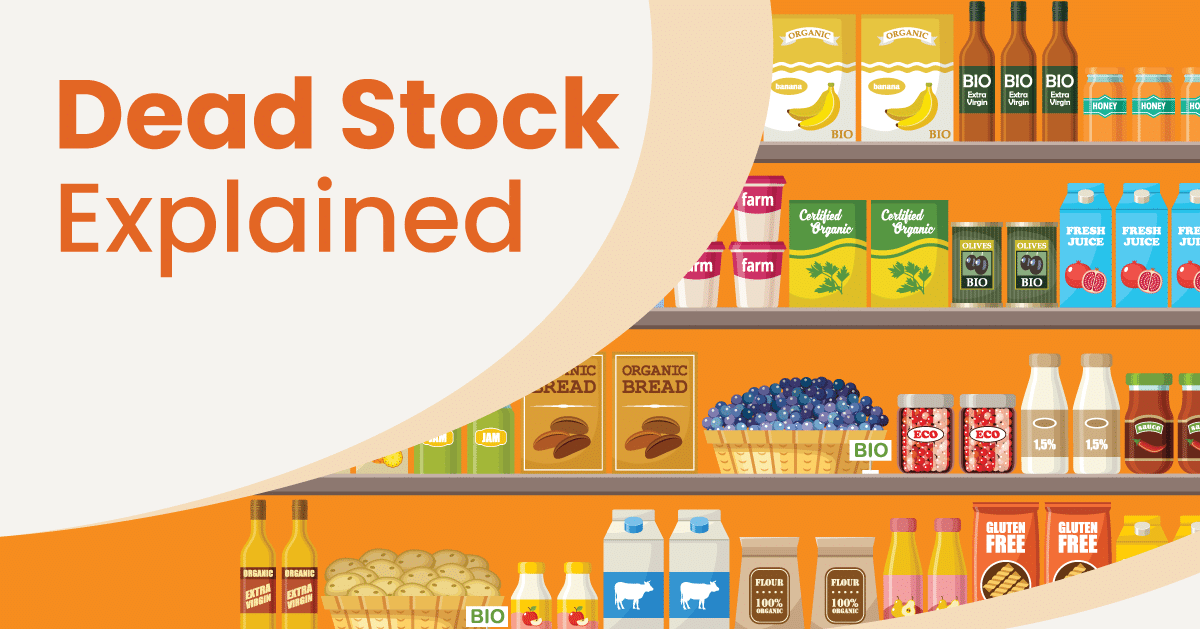
In retail, dead stock is any inventory that does not sell or turn over. The existence of dead stock represents a risk of lost revenue for retailers. Stores that do not use inventory management software are much more likely to experience dead stock in their stores.
Most retailers do not use the right inventory management software for their retail business. Many others employ poor inventory management practices. In either case, the end result will be dead stock.
Lost revenue, higher carrying costs, and smaller inventory space are some of the repercussions of dead stock that, if not addressed as soon as possible, can impede your business’s operations. Dead stock is incredibly costly for companies. Businesses cannot recoup the costs of unsold goods they have made themselves or purchased from another company.
And although dead stock is sometimes due to poor inventory management, there are also external factors that lead to it. That’s why it’s crucial to understand the key factors that can lead to dead stock and how to prevent them. This blog will cover what is dead stock, its causes, and the solutions to prevent it.
1. What Is Dead Stock?
If you’re a retail business owner, the chances are that with each change of season, somewhere in your inventory, there is an ever-growing amount of product that simply isn’t selling. In other words, dead or obsolete stock refers to items that retailers or online retailers cannot sell.
A retail business may end up with dead stock due to ordering too many items and then finding that they did not sell as expected. Dead stock also can include damaged items, wrong deliveries, leftover seasonal products, or expired items.
Dead stock is even more challenging for convenience and grocery stores because perishable items, such as food, fruit, or medicine, can quickly become dead stock if they spoil.
2. How Does Dead Stock Affect Your Retail Business?
The most obvious consequence of dead stock for a retail business owner is lost revenue. It’s best explained with a brief hypothetical. Let’s say you own a grocery store. You have ordered 200 bags of potatoes. Your potatoes will be sold in three months based on your inventory forecast. Surprisingly, consumer demand for potatoes has suddenly plummeted due to a new trend in diet fad. As a result, you only manage to sell 20 bags of potatoes after three months.
This remaining balance is now considered dead stock. If your price for a bag of potatoes was $100 and you had 180 bags leftover, you would have a loss in expected profits of $18,000. But worse, this will likely have caused a ripple effect among your suppliers, who also have too many potatoes in stock. Dead stock is detrimental to retail businesses because it ties up capital, affects revenue, increases carrying costs, and takes up valuable shelf space. Here’s how dead stock can be directly and indirectly costly to your business:
Money lost
The inability to sell your products hampers your chances of generating a profit from the merchandise you have purchased. Therefore, your investment is down the drain, which is a loss of revenue for your business.
Increase in employee salaries
Inventory management requires more effort if there are more items on the shelves. More items mean more maintenance, shuffling, counting, and ultimately disposing of the items. All of these tasks require more staffing to do the work. More employees mean higher payroll costs, which can have a disastrous impact on your cash flow management and profit margin. In the end, such a snowball effect can be mighty costly.
Higher holding costs
Also called inventory carrying costs, holding costs are those associated with storing inventory that remains unsold. Holding costs generally include storage space, labor, and insurance. The more cash a company has tied up in stock, the less cash it spends on other priorities.
Less inventory space
As a retailer, managing store space is of utmost importance. Retailers are very mindful of inventory turnover per foot of shelf space. Dead stock takes up valuable shelf space that could be used for faster-selling products. If you maintain low inventory levels, you don’t need to devote as much storage space in the building for additional inventory. This means you have more floor space to market and sell your products.
3. What Can Cause Dead Stock And How To Fix It?
There are several reasons for dead stock:
Defective product
Products are defective because of a design or engineering flaw. For example, shoe stores sometimes receive products that simply don’t cut for the size of the customer’s feet. The product may have been labeled as a size 9 but is a size 11.
Solution: Defective products are the least worrisome type of dead stock, as long as they can be returned for repair or replacement. Thus, you can contact the supplier and request a return authorization (RA) for the merchandise. The supplier will give you credit for the inventory and, in many cases, will even pay for transportation to its warehouse.
Poor forecasting
The ability to forecast sales figures and map out a strategy for periods of high customer demand is a critical component of a company’s success. Proper inventory planning helps maintain an undisrupted supply chain, low costs, competitive pricing, and satisfied customers.
Poor forecasting adversely affects inventory more than any other part of the business. Such inability to anticipate increases or decreases in customer demand can also lead to under-supply or surplus inventory. Though poor forecasting happens to all retailers, it’s essential to find ways to lessen its incidence.
Solution: One of the most effective ways to reduce forecast errors is to base demand planning on actual usage data, analyze order history to better estimate demand, and incorporate data on economic conditions. Using inventory management software that can identify patterns in the data to help improve forecasting will be highly beneficial.
Changing consumer trends and preferences
One of the main drivers of dead stock is the change in consumer preferences. Sometimes you buy a product that doesn’t sell because it no longer appeals to your customers. This may be because the product is no longer popular or because new products have made it obsolete.
No matter how good your company’s forecasting capabilities are, shifting market conditions can result in sudden and unpredictable downturns in demand, leaving the company with inventory that it cannot sell. As a result, you’ll experience poor sales.
Solution: The most effective way to address this concern is to reduce your losses by lowering your selling prices and moving merchandise out as quickly as possible. Re-adjusting your prices or reviewing your inventory management strategies is then paramount. Having merchandise in your store that customers don’t want can overshadow and undermine the other products you sell. While you will incur losses by reducing the price of products, the product only costs you more money the longer it sits on your shelves. Slashing prices to get rid of dead stock can mean price reductions of 50% or more.
Poor communication between the store owner and staff
Poor communication between the store owner and sales staff can result in inventory going unsold simply because no one knows how to sell it or understands why a customer wants it. Often, new products hit the market, but the sales staff is not versed in their use. If a store’s team can’t educate customers on the value of a product or how to use it, chances are the merchandise won’t sell.
Solution: To avoid such a scenario, ensure that you have implemented a plan to train cashiers and salespeople on the floor about each product on your shelves.
4. Other Ways To Prevent Dead Stock In Retail?
As the saying goes, an ounce of prevention is worth a pound of cure, and that’s why it’s worth knowing how to avoid dead stock. While it’s important to know how to get rid of dead stock when necessary, it’s even better to avoid having it in the first place. Better inventory management, keeping your website up to date, quality control, and better research into customer needs can help you prevent dead stock.
Here are some ways to avoid dead stock in your retail store:
Streamline inventory management
Inventory management is at the forefront of running a retail business. Improving and streamlining inventory management allows you to avoid errors that lead to stock-outs. Reliable inventory management systems give you an accurate, real-time view of your inventory.
Here, the use of automation can help erase human error. That’s why it’s essential to invest in inventory management software specifically designed for retail businesses. The right choice of inventory management software will not only prevent dead stock but also tighten the purse strings.

Learn how to manage your inventory effectively with this free eGuide.
Update your website
Sometimes a team member may forget to update your eCommerce store. In this type of situation, it may turn out that a product you have in stock is not even listed on your site. Because the product is not listed on the online store, no orders will be placed, thus causing dead stock. Make sure your online inventory is always up to date, and you’ll reduce the risk of dead stock.
Perform better market research
Better market research can help you avoid dead stock. Make sure customers want any new product line before you commit to buying it from your suppliers. It is possible to request feedback from your customers or set up a voicemail service for them to call.
Also, keep collecting customer feedback after you start selling these products – the feedback can flag up potential issues that could feed into future dead stock problems, such as changing requirements or a downturn in product quality.

5. Tips For Getting Rid Of Dead Stock
While certain factors can inevitably lead to dead stock, retailers have several alternatives for dealing with these types of scenarios:
Offer customers a free gift with purchase
An effective way to get rid of your dead stock is to offer it to your customers after they have made a purchase. Offering a gift to consumers when you sell a few items adds to the value of the order and gives shoppers a compelling reason to buy from you. While this tactic may not necessarily be beneficial to your company’s bottom line, it does free up space that you can use for other inventory.
Whether you offer giveaways with purchase promotions or go for the surprise, this is a great marketing tactic. However, it is advisable to provide consumers with a free item if they make a purchase over a certain threshold. You may decide to provide gifts to customers who make $100 or more purchases. This strategy helps you minimize losses.

Consider liquidation
You can go down the liquidation route and sell your excess inventory to organizations specializing in buying dead stock. This is one of the safest options for getting rid of your dead stock as well.
In the United States, companies like Quicklotz, Bulq, Bstock, Mid Tenn, and many others select merchandise and offer to buy your items at deeply discounted prices. Though this means you are unlikely to turn a profit from this. at least you free up space and capital for your business. It also helps you improve cash flow and run your retail business smoothly.
Bundle products
Product bundling is a strategy whereby several products are grouped and sold as a single unit at a single price. This strategy is used to entice customers to buy more products.
McDonald’s Happy Meals is an example of product bundling. Rather than selling a hamburger, soda, and fries separately, they are sold as a combination, driving more sales than offering them separately.
You can emulate the same strategy for your retail store by providing your customers bundled sales of products that include your unwanted inventory. To earn as much revenue as possible, it’s best to bundle dead stock with trendy items that will probably sell anyway. Just be careful to avoid mismatched products. When customers feel they are being pushed into buying items they don’t want or need, they are less likely to find value in the bundle.

Leverage clearance sales
Clearance sales are goods at discounted prices to clear excess inventory or because the store is closing. Clearance sales are used as a marketing strategy by many companies as an inventory management tool and as a focal point for price-conscious consumers. To clear out dead stock quickly, you can run a sales event by listing all of your dead stock on the website and making sure it is available in your brick and mortar stores.
Let customers know about the discounts by any means possible, including email, SMS, and other forms of advertising. You may not increase your profit margins, but you will generate some cash flow while simultaneously freeing up shelf space, allowing you to fill them with more profitable items.
Offer discounts, but don’t start too high. You can start with 20% discounts, and if sales aren’t as good as you want, you move to slightly higher discounts to entice customers to make a purchase. Think about leveraging flash sales as well. They can be an excellent way to stir up the consumer urgency.

Donate dead stock items
Charitable initiatives create a sense of support for your community and also contribute to your brand’s image. In addition to giving people a good impression of your brand, giving away dead stock can be used as a tax deduction when filling out your accounts. Plus, it’s just a good thing to do!
Fashion retailers are in a particular position to donate dead stock to charity as it is easy to donate new clothes and shoes. An increasing number of consumers, especially younger people, are concerned about corporate social responsibility regarding their purchasing decisions. A Forbes study found that 81% of millennials expect companies to “publicly commit to corporate citizenship.”
Investing in Inventory Management Software: The Best Solution to Guard Against Dead Stock
Companies that perform inventory control and management manually tend to have limited insight into inventory levels. They rely on periodic physical inventory checks and lack a seamless flow of up-to-date information. Inventory management software can help companies, especially retail businesses, avoid dead stock by tracking inventory levels in real-time and forecasting demand to decide how much inventory to purchase.
You can track the performance of all your stock-keeping units (SKUs) to see which items are selling and which are not and take action to increase sales or phase out items that are at risk of becoming dead stock.
The more I learn to use KORONA POS, and with the help of awesome customer support, the more I believe this POS system could be a very good fit for many types of businesses out there. What I love the most about this software is the 24/7 customer service and reporting function which are very easy to use.
-Kevin L.
KORONA POS is a retail inventory management software with ABC analysis technology that enables retailers to categorize products from least to most important. The ABC analysis lets you know which products are worth investing in and the appropriate volume of products to cover your customers’ needs. Learn more about how KORONA POS can help you better manage your inventory by clicking on the button below for a product demo.
FAQs: What Is Dead Stock?
There are many ways to avoid dead stock. Preventing dead stock is primarily a matter of investing in inventory management software to manage your inventories better. Poor inventory management is one of the leading causes of dead stock. Other ways to prevent dead stock include monitoring slow-moving products and surveying customer needs.
It is possible to buy dead stock if you are a small business that does not have the capital to purchase the minimum quantity required by large suppliers. Etsy, for example, is an ideal platform to buy unique dead stock fabrics. Most dead stock, though, is bought by clearance or liquidations retailers who buy it in bulk. It is much for unusual for individual consumers to purchase dead stock.
Retailers have several solutions for selling dead stock. These solutions include offering bundled products, a free gift with purchase, partnerships, donations, and liquidation companies.













